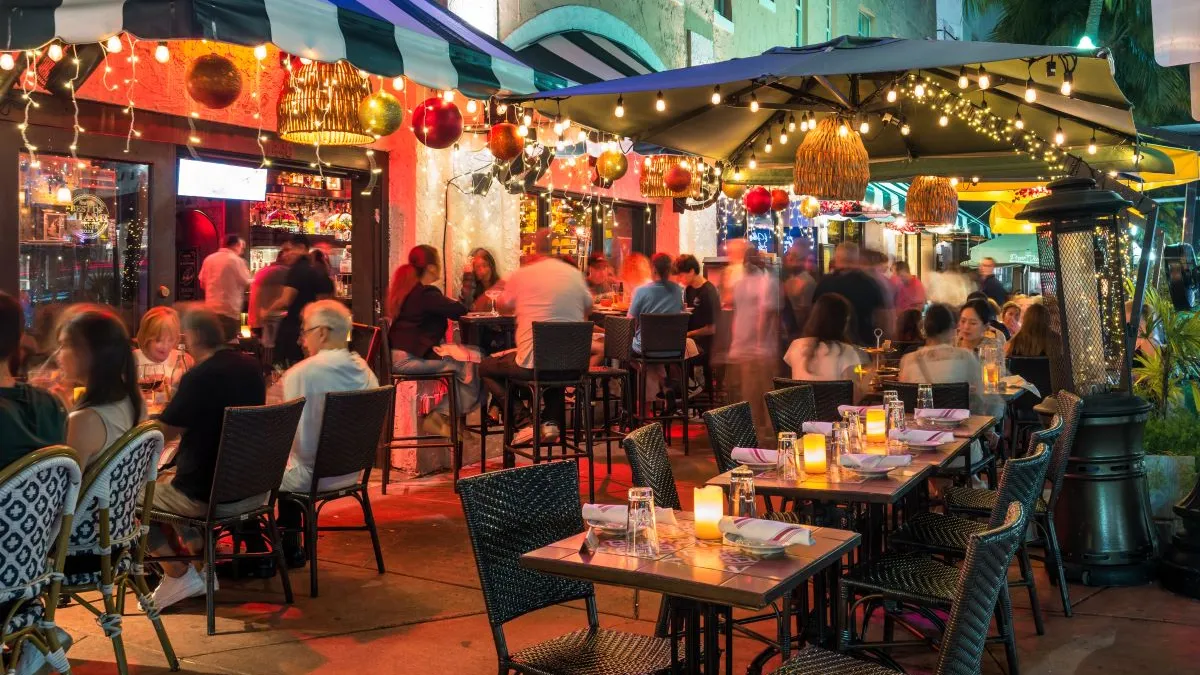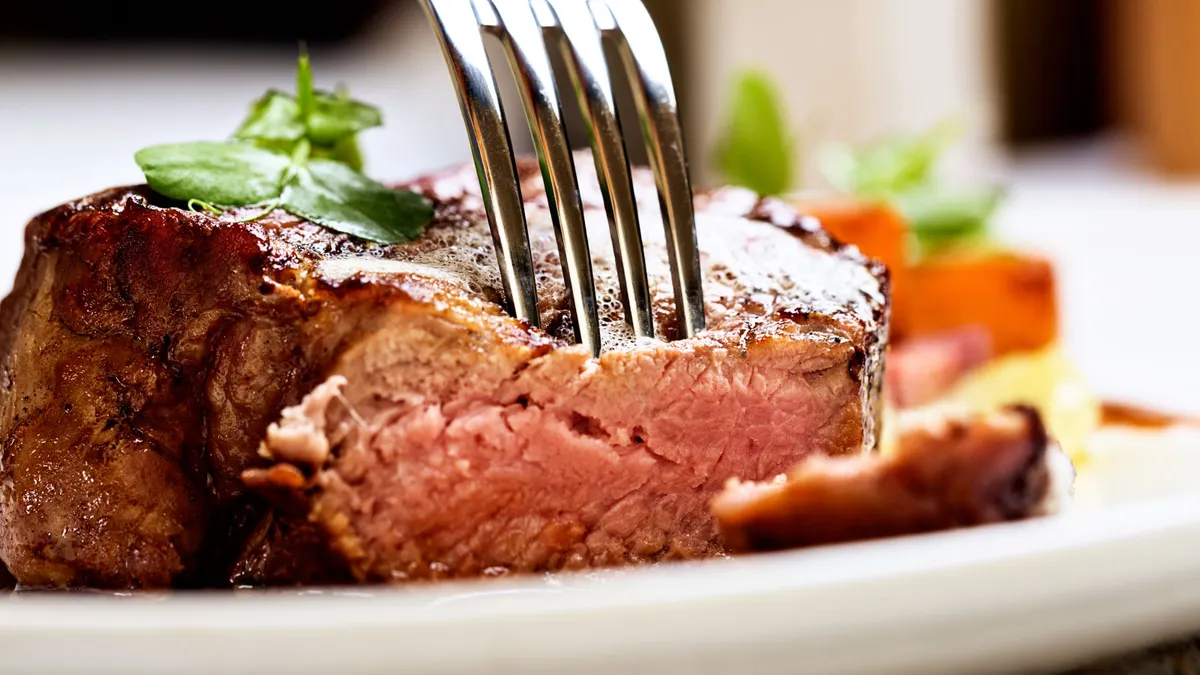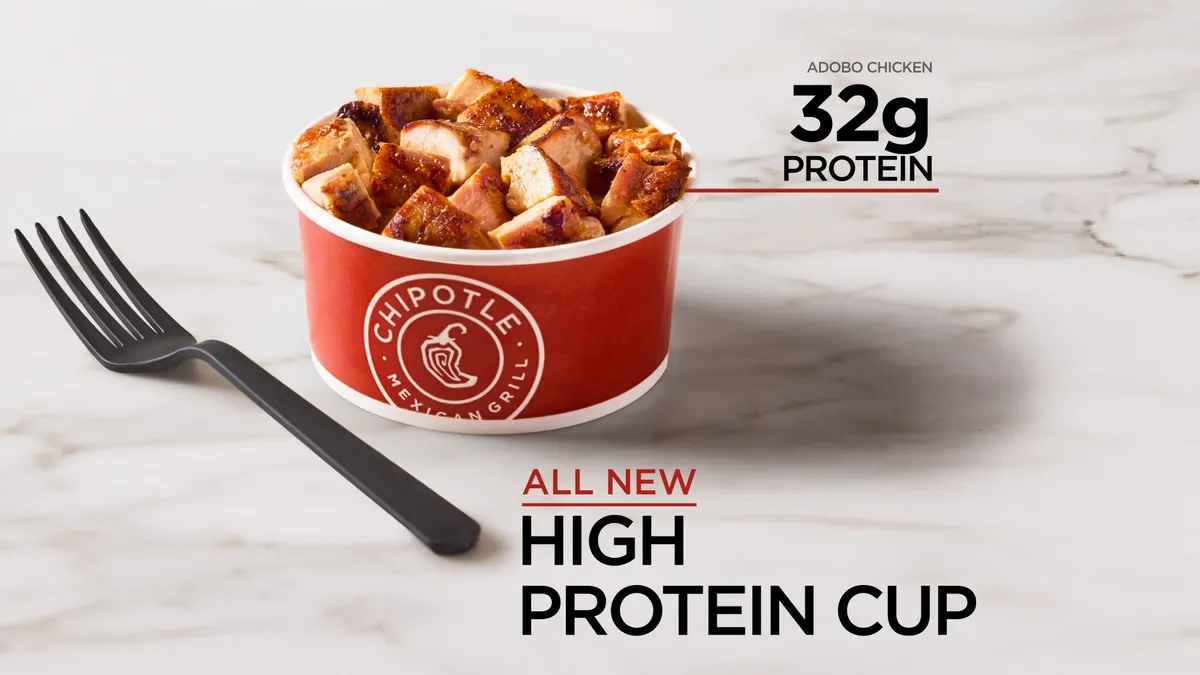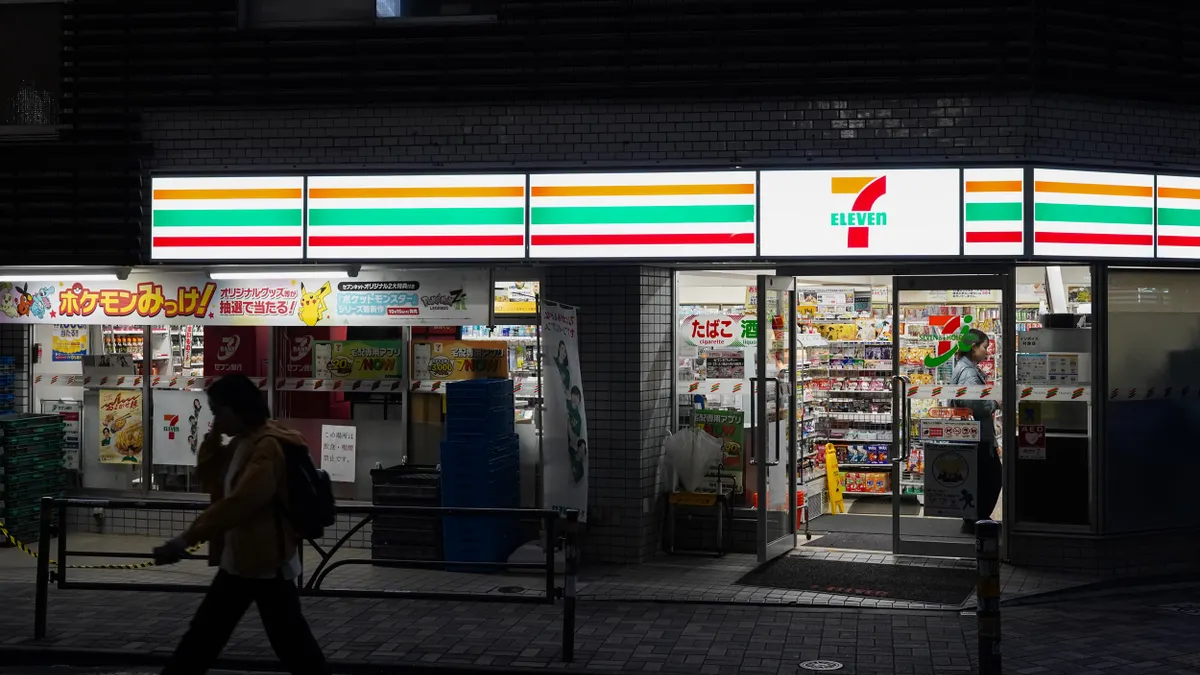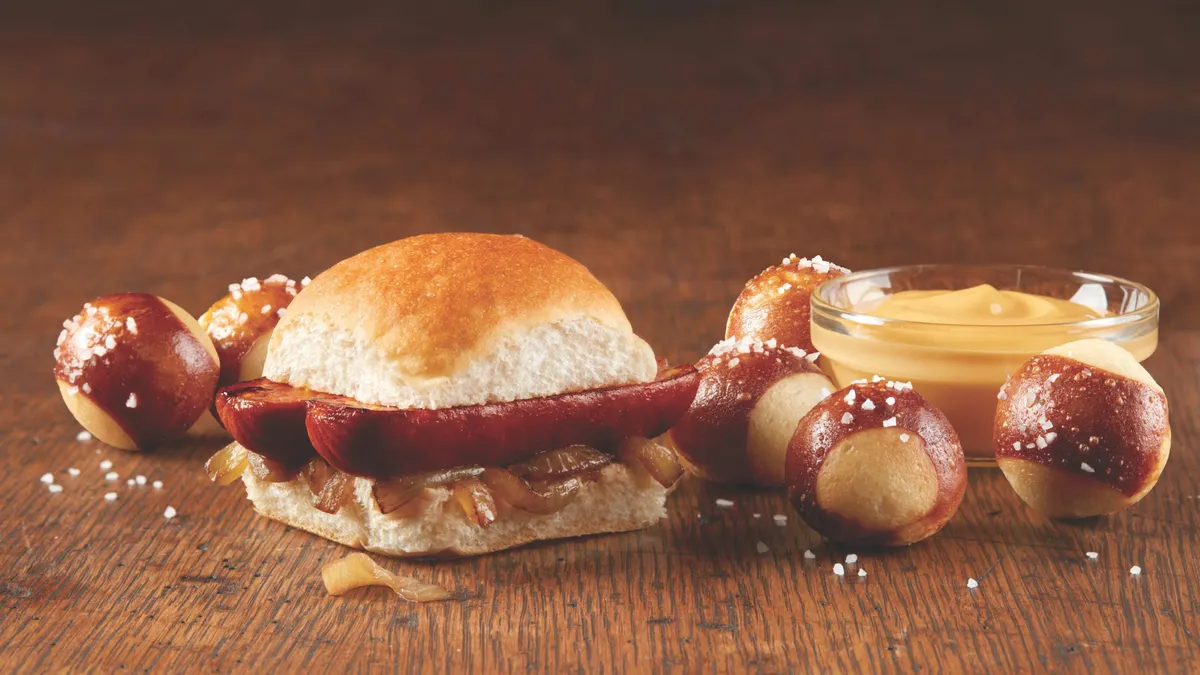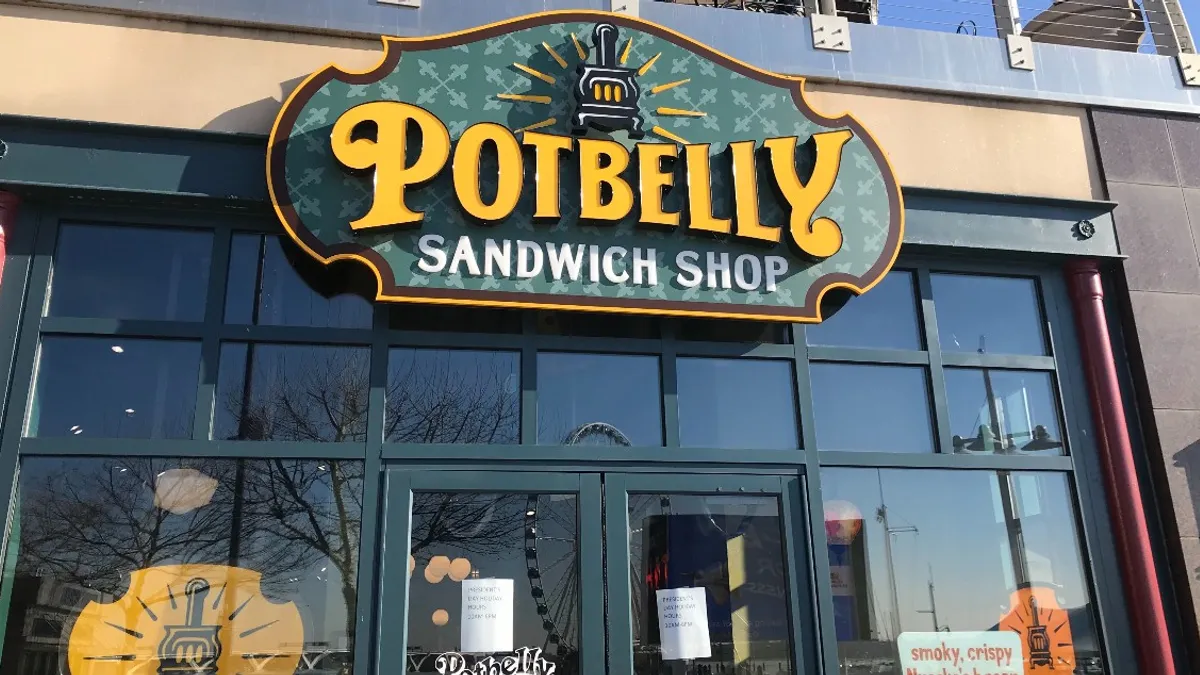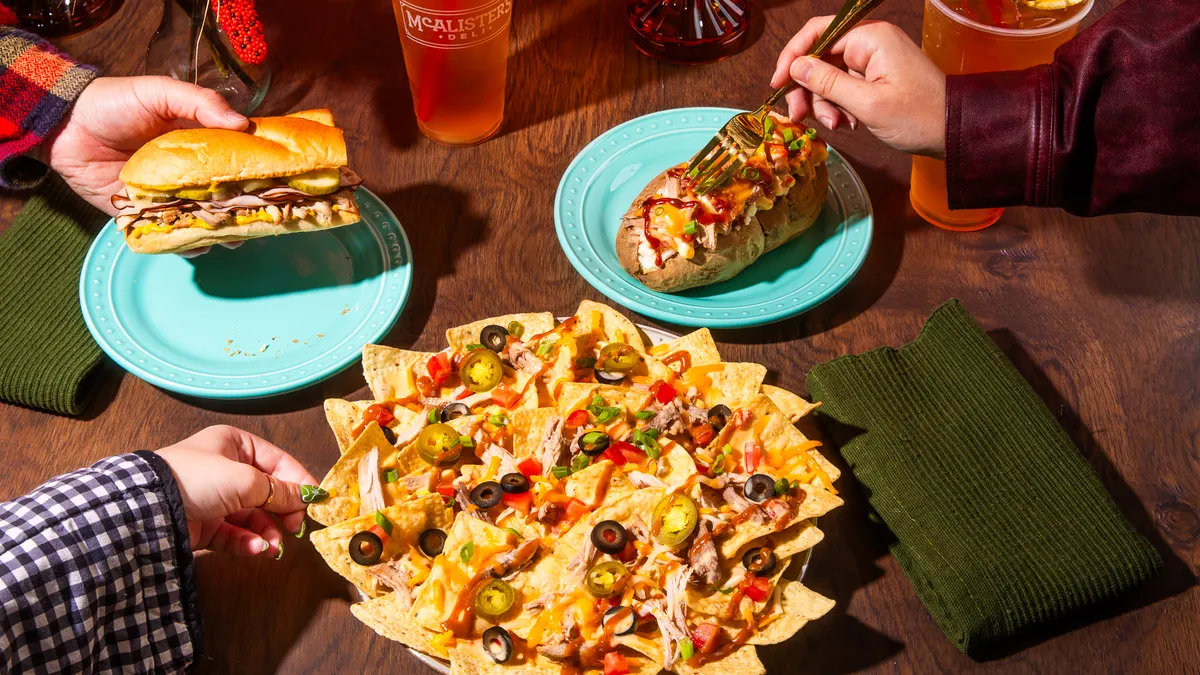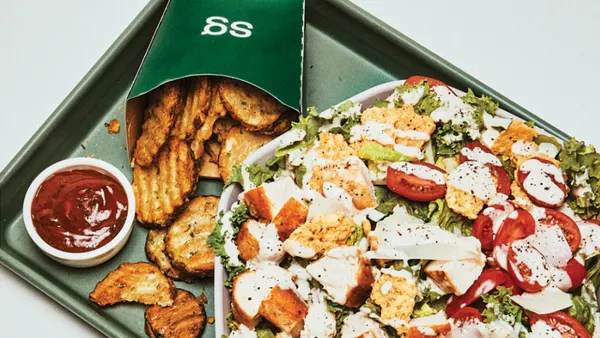As summer comes to a close, now is the time for restaurants to prepare for the holiday season rush, experts say.
The season can be busy, as families come together over a meal and businesses call on restaurants to feed their holiday parties and gatherings.
In 2024, more than two-thirds of consumers planned to celebrate part of the holiday season at a restaurant, according to a survey by Tock, a reservation and table management company. That survey found a similar level of engagement to the National Restaurant Association’s 2023 projections, which showed that two-thirds of adults planned to eat out over the course of several weeks between Thanksgiving and New Year’s, with 48% planning to order takeout or delivery.
To capture that traffic and revenue potential, restaurant owners need to start thinking about staffing, advertising, and navigating potential challenging economic conditions caused by tariffs with their suppliers.
Operators also need to start crafting festive seasonal menus that allow them to successfully cater to those large groups and parties. That includes holiday-themed meals, comfort food and celebratory dishes that can be made consistently for hundreds of people.
During the season, the “independent restaurants that focus on both the guest experience and operational preparedness will be best positioned to thrive,” said Kevin Murphy, a professor of restaurant management at the Rosen College of Hospitality Management.
Staffing
It’s important for restaurants to evaluate their staff early, comparing last year’s holiday sales and guest counts with current projections to determine possible staffing gaps, Murphy said.
Pre-opening events can give restaurants time to assess their staffing schedules and plans, said Rick Camac, executive director of industry relations at the Institute of Culinary Education.
But finding additional staff to hire can be difficult, Camac said. Temp companies can help connect restaurants with experienced people who don’t need to be added to payroll, he said.
There are also opportunities to temporarily hire college students, who often work at restaurants over the summer and during the holiday months — saving money on the hiring process, said Ryan Tuttle, a senior consultant at Euromonitor International.
Restaurants should “be in communication now with students that are returning to school to prime them for a return this winter when demand typically picks up,” Tuttle said.
Crafting menus
Holiday season menus need to balance festive offerings with operational feasibility, factoring in ingredient costs and price points that reflect both value for diners and profitability for operators, Murphy said.
Restaurants should also consider including menu items that have a higher demand during the season, such as celebratory foods like prime rib and lobster, festive holiday desserts such as yule logs and pecan bourbon pies, and comfort foods with elevated twists like short rib bourguignon and white truffle mac and cheese, he said.
Comfort dishes that most people enjoy — such as roast chicken, prime rib, filleted fish, or a vegetarian stew or pasta — tend to resonate with customers over the holiday season, Camac said.
Hot drinks also typically trend during the fall and winter, said Tuttle. Restaurants can keep their beverage offerings attractive and enticing by mixing in various seasonal garnishes, such as cranberries or spices, he said.
But offering exotic and complicated dishes can create pitfalls for busy restaurants, Camac said. Operators need to ensure they offer dishes that a large percentage of prospective consumers will enjoy and that the kitchen can execute well.
Preparing for economic disruptions
Demand over the holiday season could be softer due to a number of economic challenges. The tariffs implemented by the Trump administration are slowly having an impact on the economy, and the additional products stockpiled before the tariffs were enacted are starting to run low, Tuttle said.
Restaurant owners should keep an eye on tariff schedules as an increasing number of markets solidify trade relationships — providing some better confidence on pricing, said Tuttle. Failing to understand evolving the tariff rates can eat into profits and pose a major challenge to owners, he said.
Restaurant prices have risen sharply over the past five years due to general food inflation and recent tariffs, said Murphy. That inflation was caused by supply chain disruptions and labor shortages following the Covid-19 pandemic and extreme weather affecting crop supplies, he said.
It's crucial for restaurants to maintain good relationships with their suppliers and key contacts amid the current consumer pullback on spending, Tuttle said.
“I would be prepared for families to cut back on some eating out this year in response to higher prices and greater uncertainty,” Tuttle said.
Preparing for large holiday gatherings and parties
Many workers have returned to the office over the past year and a half, providing more opportunities for the catering arms of restaurants over the holidays, Tuttle said.
Restaurants have seen much of their business come from orders outside their brick and mortar premises in recent years. Roughly 75% of all restaurant traffic comes from off-premise dining — including takeout, delivery and drive-thru, according to a 2025 National Restaurant Association report.
“Work holiday parties and other events should be more valuable this year than in recent years,” Tuttle said.
Menu items for holiday parties and large events are typically priced at least twice the amount the restaurant would normally charge, said Camac. But the total price depends on the time of the day and the day of the week, with a premium on the weeks just before Christmas, he said.
Menus for such gatherings should also be easy to execute and plate, and include no more than three to four components, said Camac. That requires considering the size of their plating areas since many restaurants do not have the space to plate 150 dishes at once, which is needed for private events, he said.
Overall, to manage the surge in orders, independent restaurants need to start planning well before Thanksgiving by forecasting demand based on prior years, monitoring reservations and ensuring their suppliers are able to meet increased orders, Murphy said.
Operators should also streamline operations by tightening their inventory management, clarifying holiday hours and setting clear communication channels with their staff and guests, Murphy said.
“Strategic planning, thoughtful staffing, and creative yet manageable menus are the cornerstones of a successful holiday season,” he said.


